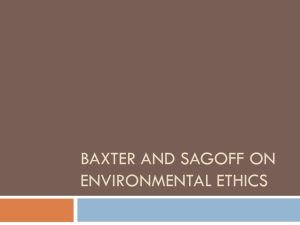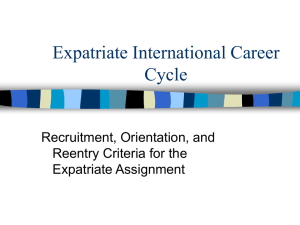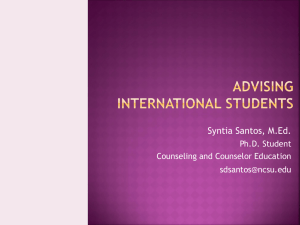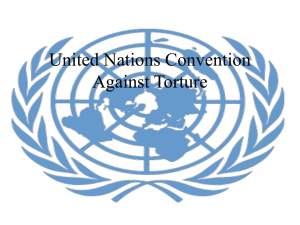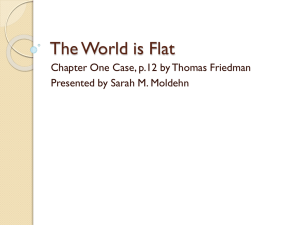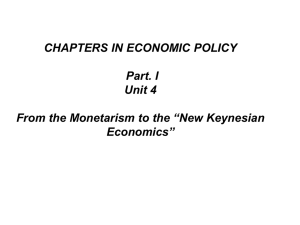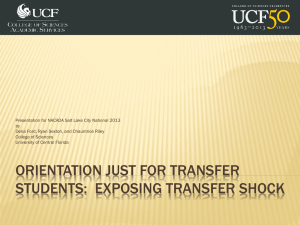Example
advertisement
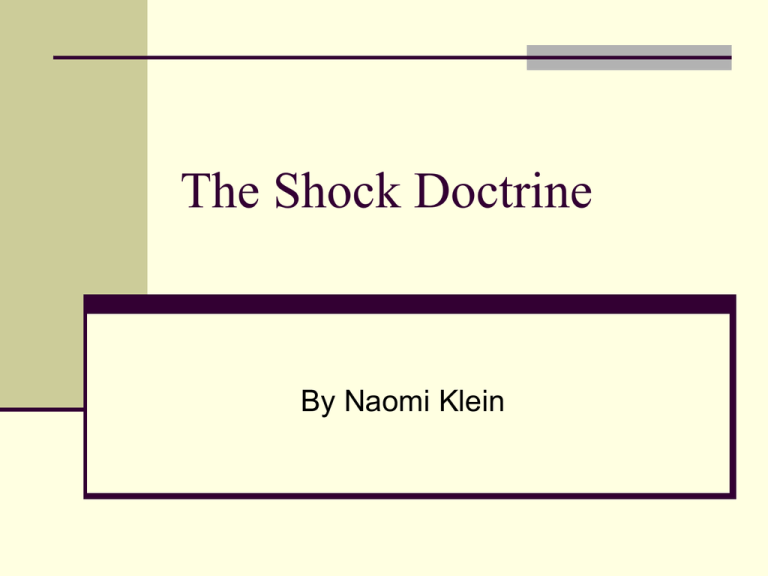
The Shock Doctrine By Naomi Klein Liberals in the United States In 2008, exit polls showed 22% of electorate self-identified as “liberal” This represents a large proportion of American population, well over 50 million potential customers This book is more easily marketable to this niche of American consumers Summary The Shock Doctrine presents many arguments appealing to liberal consumers... Big business and gov’t exploit disasters for monetary gain Free-market systems are not optimal, and gov’t must enforce them with torture American gov’t forced to make concessions to the political left during Cold War, but are not bound anymore Gov’t privatization is destructive to economy Endorsements After circulating this manuscript, the book received high praise from many publications and personalities These many endorsements will increase appeal for liberal customers Endorsements “This is a brilliant book, one of the most important I have read in a long time.” -Howard Zinn Endorsements “ [Shock Doctrine] Pulls the curtain back on free-market myths and exposes the forces that are really driving our economy... Klein’s book is powerful and prophetic... A brilliant dissection” -Arianna Huffington Endorsements “A revelation! With unparalleled courage and clarity Naomi Klein has written the most important and necessary book of her generation...so important and so revelatory a book that could very well prove a catalyst, a watershed, a tipping point in the movement for economic and social justice” -Tim Robbins Endorsements from Publications The Washington Post The Independent (U.K.) The Telegraph (U.K.) New Statesman (U.K.) In These Times Ms. Magazine The New York Observer John Cusack Dow Jones Business News NOW Magazine (Canada) Toronto Star Summary of Text Divided into 23 Chapters, each covering different examples Locales include... Latin America, United Kingdom, Poland, China, South Africa, Russia, United States, and Iraq All of these examples reinforce arguments Aesthetic Appeal of Publication All chapters and sections begin with diverse quotes pertaining to topic Well organized and thoughtfully constructed Needs to be shortened at certain points Introduction: “Blank is Beautiful” Introduction of Milton Friedman’s ideas Introduction of the eponymous “Shock Doctrine” Use of disasters and national turmoil in order to introduce free-market policies Overview of examples to be presented later Chapter 1: “The Torture Lab” Introduces Dr. Ewen Cameron, who is hardly mentioned after this chapter, who experiments with electroshock therapy and “deprogramming” of personalities Discusses connection between free-market systems and torture, priming the audience for the “shock” of economic policies Likens deprogramming of patients to deprogramming of economic welfare policies While illogical at parts, our intended audience will see the obvious connection between both electroshock torture and “shock” economic policies Chapter 2: “The Other Doctor Shock” Introduces Milton Friedman Discusses the implications of Chicago School economic theory CIA-sponsored coups allowed Friedman to influence economic policy in Latin America Exchange program set up to send Chilean students to ultra-conservative University of Chicago Chapter 3: “States of Shock” Milton Friedman advises General Augusto Pinochet Pinochet dismantles “developmental” economic system Free-market policies were instituted Costs of basics went “through the roof,” inflation was at all-time high, country was flooded with cheap imports Big business benefits greatly, while poor are left to suffer Chapter 4: Cleaning the Slate Free-market ideology quickly spread to Argentina and Uruguay, with copious use of torture techniques and privatization Pinochet repeatedly called to trial for crimes against humanity Gov’ts in the Southern Cone were brutal towards dissenters, “disappearing” large populations of suspected unionists and leftists Chapter 5: “Entirely Unrelated” Friedman’s argument for separating economic policy with human rights abuses unfounded Free-market policies are enforced by mass terror and detention United States gov’t supported these abuses, and put undue blame on leftists guerrillas in Southern Cone Chapter 6: “Saved by War” Introduction of Thatcherism Margaret Thatcher used Falklands war to institute privatization of British assets and make domestic war against coal miners strike in 1984 Thatcher did not go as far as dictators because she had to get reelected Chapter 7: “A New Doctor Shock” Bolivia’s ills are introduced: inflation of over 14,000% Harvard Economist Jeffrey Sachs called in to develop anti-inflation policies Sachs introduced free-market policies against wishes of voters Inflation dropped to 10%, but not without pains Unemployment rose to 30% Failure, argues the book Chapter 8: “Crisis Works” Milton Friedman’s disdain towards the IMF and World Bank is discussed While he may have disdained them, Klein argues that “no institutions [were] better positioned to implement his crisis theory” IMF forced gov’ts to adopt radical freemarket policies as prerequisites for loans Lower tax rates led countries to be unable to pay back loans Chapter 9: “Slamming the Door on History” Discusses Poland’s “Solidarity” movement Betrayal of socialist goals to the free-market policies of Jeffrey Sachs, Friedman’s “Shock Doctrine” successor Discusses China’s market liberalization Massacre at Tiananmen Square discussed, connecting it to said liberalizations Chapter 10: “Democracy Born in Chains” End of apartheid in South Africa discussed While fighting under a banner of land- redistribution, African National Congress (ANC) betrays supporters by signing over economic control of country to whites De Klerk gov’t convinces ANC to promote radical free-market systems, which continue the economic apartheid of previous regime Chapter 11: “Bonfire of a Young Democracy” Soviet Union collapses; Boris Yeltsin gains power through dubious means Auctions off massive Soviet monopolies to Oligarchs Over 225,000 state-owned companies privatized Third of population fell below poverty line Yeltsin enforces policies through emergency powers; fires on parliament Chapter 12: “The Capitalist ID” Discusses the idea that Western gov’t implemented social democratic policies in order to appease leftists and maintain military control over European countries Ruining of Canada’s credit score was concocted by free-market ideologues in order to defeat social welfare policies Chapter 13: “Let it Burn” Asian Tigers (South Korea, Philippines, Taiwan, and Singapore) economically destroyed by market fluctuations Stronger gov’t policies would have prevented this fluctuation, saving countless lives and jobs Chapter 14: “Shock Therapy in the U.S.A.” Harshly criticizes Rumsfeld’s control of private assets representing a conflict of interests with his Cabinet position Also criticizes Rumsfeld’s outsourcing of the military effort, which increases costs and creates companies not accountable to justice systems Market for constant warfighting created through defense privatizations Many jobs contracted out, as federal bureaucracy was downsized Market for surveillance technology ballooned after 9/11 Chapter 15: “A Corporatist State” Rumsfeld owned large share of company controlling Tamiflu, and sought policies to increase profits Corporations beginning to dictate policy more aggressively Chapter 16: “Erasing Iraq” After the initial shock of invasion, Paul Bremer instituted massive free-market policies and torture in order to erase dissent Iraq was testing ground for neo-conservative ideas that could not be implemented in United States Privatization of military and reconstruction policies created inefficiencies in reconstruction, and poor results Chapter 17: “Ideological Blowback” Iraqi’s had no control over their own reconstruction Subcontracting abounded, driving down quality of reconstruction Free-market systems fed violence as thousands were plunged into poverty United States “locked in” Bremer’s policies into the Constitution Chapter 18: “Full Circle” Free-market policies pillaged Iraq of any prosperity, leaving a scorched, violent land Human rights groups watched as hundreds were tortured and detained Skilled labor has fled Iraq Mahdi Army arises to provide basic services and defense for disenfranchised Iraqis Chapter 19: “Blanking the Beach” The tsunami in Sri Lanka removed all ancestral homes from beaches, allowing hotels to buy up land Hotel lobbyists influenced gov’t of Sri Lanka to allow them rights to beachfronts, while poor fisher families were moved inland U.S. gov’t supported this in order to increase tourism Chapter 20: “Disaster Apartheid” While U.S. gov’t helped wealthier Katrina victims, the poor were left to suffer Milton Friedman’s last publication called for privatization of New Orleans schools Companies were called in to help with reconstruction of New Orleans, with negative results Very inefficient disaster response due to freemarket solutions Chapter 21: “Losing the Peace Incentive” In Israel, a booming market for high-tech surveillance and anti-terrorist equipment has been created by 9/11 In order to improve technology to be sold to the United States, Israel has no need to pursue peace. This hampers any solutions to IsraelPalestine problems Chapter 22: “Shock Wears Off” In Latin American societies, gov’ts have been constitutionally elected once more, and are moving towards developmentalism once again The shock doctrine’s policies will continue to be felt for years to come, but the world is on a road to recovery In Conclusion While overlong and preachy, this book is destined to be on the shelves of every liberal American, and is a profitable addition to our catalog

